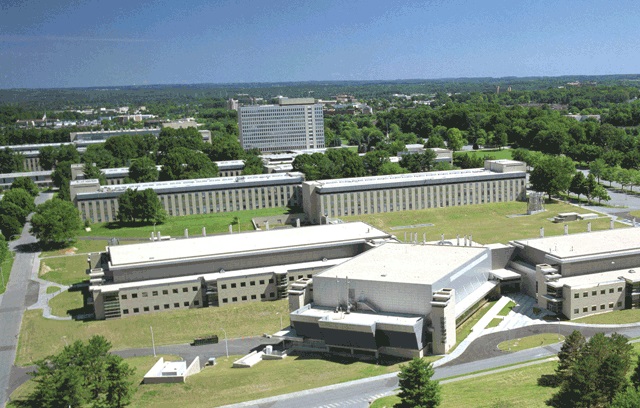Abiit sed non oblitus | New York
- Home Page 211

To Technical Support: Timestamp 9:00 UTC
This is a test post to help GoDaddy Tech Support restore full functionality of the Standards Michigan website. For eight years content here was updated instantly and accurately across all time zones on the internet until last Thursday — flawlessly.
As software eats the world we have to roll with it; adjusting accordingly. Our 50-state gathering place is no less an engineered system as the WordPress open source software platform.
This post gives GoDaddy WordPress programmers a visible reference mark for content flow. Daily topics which appear on our CALENDAR remains secure as normal and is linked below for the convenience of our colleagues, clients, subscribers and visitors. From a technical standpoint, nothing has changed; only the manner in which topics appear on our simple but fast home page.
This page will also be posted to our X-feed.
Our footer has somehow vanished along with that functionality — more likely a WordPress plug in. Until GoDaddy WordPress experts restore it, our location can be found on our CONTACT page.
Standards Michigan | October 30
Standards Michigan | October 29
Standards Michigan | October 28
Standards Michigan | October 27
Virtual reality technology in evacuation simulation of sport stadiums
Xiao Yi | Shanghai University of Sport
Abstract. With the activities of major sports events have become increasingly active and the social influence of sports events is gradually increasing, people have more and more opportunities to watch matches in sports stadiums. Sports stadium, as a place of relatively large occupant density, has high demands for its safe operation except that it is necessary to meet the needs of competitions. Under the unexpected situations, how to ensure the public safety has become the focus of social concern. This paper takes the emergent evacuation simulation of sports stadium as a main research object. It concerns the main problems that how to use virtual reality technology to build a three-dimensional simulated scene of sports stadium; how to truly simulated the whole evacuation process of many people under unexpected situations. The scene modeling of sports stadium, The construction of evacuation model, The visualization of evacuation process, Dynamic Roaming and Interaction design, Evaluation system and other issues are discussed in this article.
CLICK HERE to order complete paper
Related IEEE Research:
Design of an Intelligent Management System for Sports Activities Based on New Information Technology
Research on the Application of Flipped Classroom Model in College Sports Dance Teaching
Electrical installations and Protection Against Electric Shock
Technical Committee 64 develops the International Electrotechnical Commission consensus product that covers similar territory for the global electrical power industry as NFPA 70 (National Electrical Code). Keep in mind that the safety traditions of the NFPA suite of consensus products are inspired by fire safety considerations. IEC 60363 Electrical installations and protection against electric shock — the parent document that applies to the wiring systems of education and healthcare facilities — was inspired from voltage safety.
The scope of IEC 60364 is reproduced below:
– concerning protection against electric shock arising from equipment, from installations and from systems without limit of voltage,
– for the design, erection foreseeable correct use and verification of all kind of electrical installations at supply voltage up to 1 kV a.c or 1,5 kV d.c., except those installations covered by the following IEC committees: TC 9, TC 18, TC 44, TC 97, TC99
– in co-ordination with TC 99, concerning requirements additional to those of TC 99 for the design, erection and verification of electrical installations of buildings above 1kV up to 35kV.
The object of the standards shall be:
– to lay down requirements for installation and co-ordination of electrical equipment
– to lay down basic safety requirements for protection against electric shock for use by technical committees
– to lay down safety requirements for protection against other hazards arising from the use of electricity
– to give general guidance to IEC member countries that may have need of such requirements
– and to facilitate international exchanges that may be hampered by differences in national regulations.
The standards will not cover individual items of electrical equipment other than their selection for use. Safety Pilot Function: Protection against electric shock.
KUPDF Commentary on 60364 and comparisons with NFPA 70 National Electrical Code
Since neither the USNA National Committee to the IEC (USNA/IEC), nor the US Technical Advisory Administrator (National Electrical Manufacturers Association) has a workspace set up for responding to IEC 60364 calls for public comment, we set one up for ourselves several years ago for education facility and electrical engineering faculty and students:
IEC | USNA IEC Workspace | Updated 12 June 2023
Note that anyone in the world is welcomed to comment upon IEC documents, contingent upon obtaining (free) login credentials. To review the the strike-and-bold you will need login credentials. Alternatively, you may click in to the 4-times monthly teleconferences of the IEEE Education & Healthcare Facilities Committee. See our CALENDAR for the next online meeting.
Colleagues: Mike Anthony, Jim Harvey, Massimo Mittolo, Giuseppe Parise
Federal Agency Conformity Assessment
The National Institute of Standards and Technology requests comments on proposed revisions to regulations updating policy guidance on Federal agency use of conformity assessment that reflects advancement in conformity assessment concepts, and the evolution in Federal agency strategies and coordination in using and relying on conformity assessment.
The provisions are solely intended to be used as guidance for agencies in their use and reliance on conformity assessment to meet agency requirements and do not preempt the agency authority and responsibility to make decisions authorized by statute or required in establishing regulatory, procurement, or programmatic activities.
Federal Register: Guidance on Federal Conformity Assessment Activities
LEARN MORE:
ANSI Blog: NIST Guidance on Federal Agency Conformity Assessment Activities
Class: A Guide Through the American Status System
This content is accessible to paid subscribers. To view it please enter your password below or send mike@standardsmichigan.com a request for subscription details.
New update alert! The 2022 update to the Trademark Assignment Dataset is now available online. Find 1.29 million trademark assignments, involving 2.28 million unique trademark properties issued by the USPTO between March 1952 and January 2023: https://t.co/njrDAbSpwB pic.twitter.com/GkAXrHoQ9T
— USPTO (@uspto) July 13, 2023
Standards Michigan Group, LLC
2723 South State Street | Suite 150
Ann Arbor, MI 48104 USA
888-746-3670






















